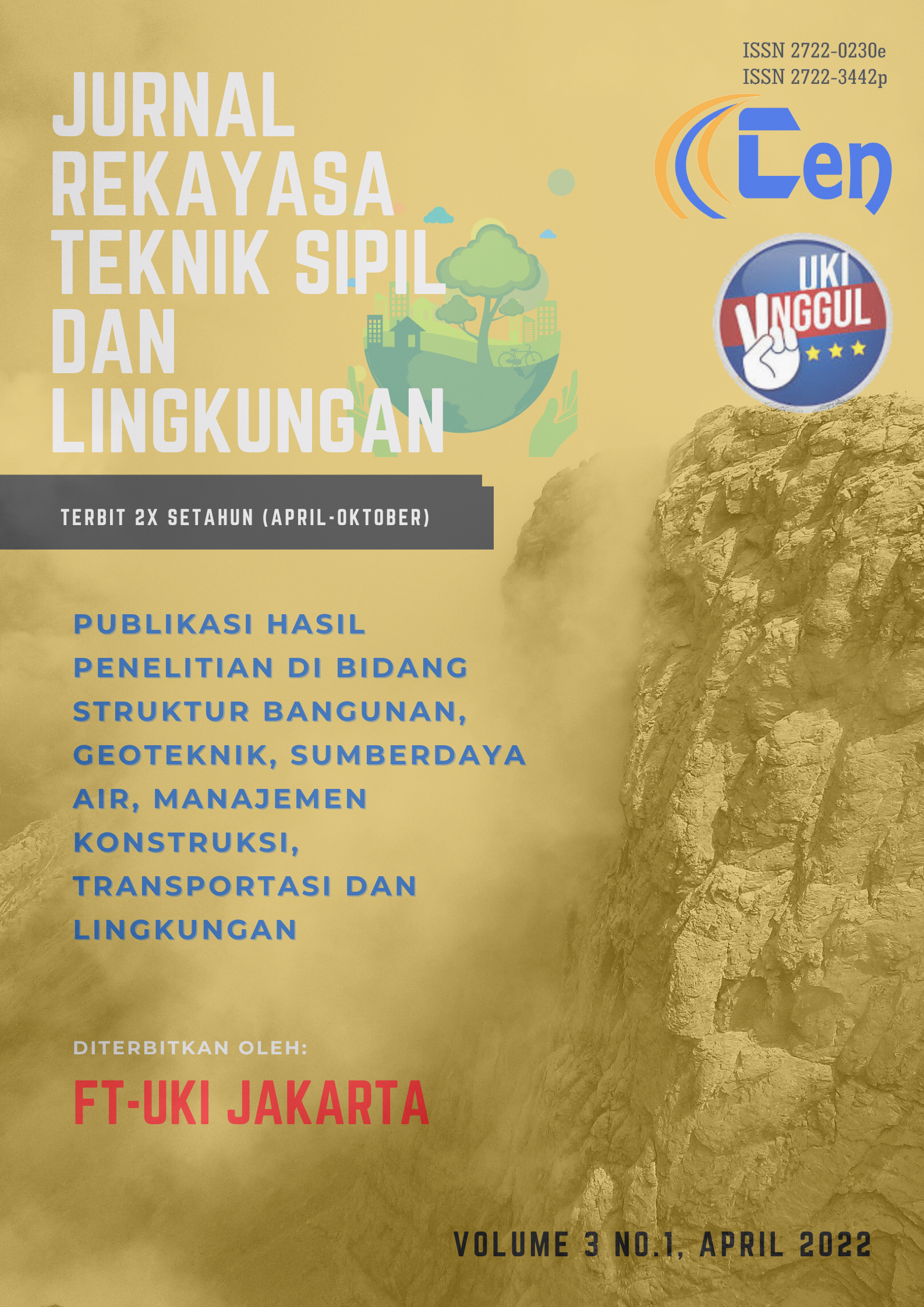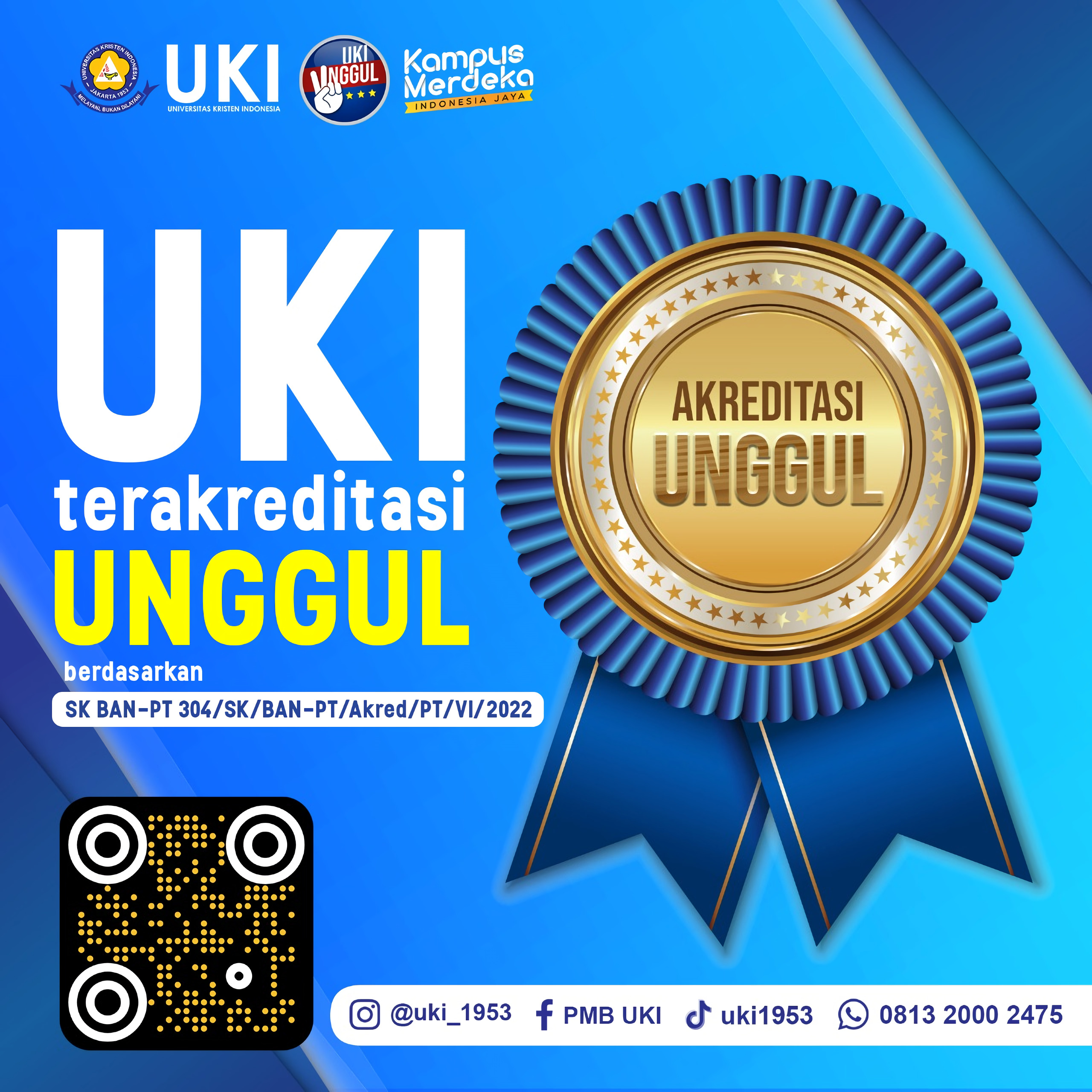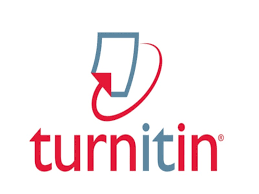PENGARUH VARIASI AGREGAT KASAR PENYUSUN BETON POROUS TERHADAP KUAT TEKAN DAN POROSITAS BETON
DOI:
https://doi.org/10.33541/cen.v3i1.3966Keywords:
Porous concrete, water catchment area, compressive strength, infiltrationAbstract
The continued use of traditional concrete has resulted in a thicker layer of waterproofing, preventing rainwater from entering the ground and increasing surface run off. As a result, the water table drops during the rainy season, and flooding occurs. One of the innovations to anticipate or overcome these problems is using renewable materials such as aerated concrete. Permeable concrete pavements are intended to reduce puddles on the street. By omitting fine aggregate, porous concrete is simple, lightweight concrete. The interconnected cavities result in a high level of porosity. Porous concrete usually has little to no fine aggregate and enough cement paste to coat the coarse aggregate's surface. Due to the increased porosity, the compressive strength of un-sanded concrete is lower than that of conventional normal concrete. Sand-free concrete has much lower tensile and flexural strength than conventional concrete. In this study, two coarse aggregates with nominal maximum sizes of 12.5 mm and 6.7 mm were used as split rocks with weights of 1.123 kg/m3 and 2.63 kg/m3, respectively. Hence, a FAS of 0.35 and a water volume of 0.35 kg using Portland cement type 1 with a quantity of 389.6 kg/m3. The test object is a concrete cylinder with a diameter of 80 mm and a height of 16 mm. After immersing the specimen in a tub of water, each mixture has three specimens.
References
ASTM D448-03a. (2012). Standard Classification for Sizes of Aggregate for Road and Bridge Construction. ASTM International.
Committee, A. C. I. (2006). ACI 522R-06. In Concrete Construction - World of Concrete.
Kant Sahdeo, S., Ransinchung, G. D., Rahul, K. L., & Debbarma, S. (2020). Effect of mix proportion on the structural and functional properties of pervious concrete paving mixtures. Construction and Building Materials. https://doi.org/10.1016/j.conbuildmat.2020.119260
Sonebi, M., Bassuoni, M., & Yahia, A. (2016). Pervious concrete: Mix design, properties and applications. RILEM Technical Letters. https://doi.org/10.21809/rilemtechlett.2016.24
Azadgoleh, M. A., Mohammadi, M. M., Ghodrati, A., Sharifi, S. S., Palizban, S. M. M., Ahmadi, A., Vahidi, E., & Ayar, P. (2022). Characterization of contaminant leaching from asphalt pavements: A critical review of measurement methods, reclaimed asphalt pavement, porous asphalt, and waste-modified asphalt mixtures. Water Res, 219, 118584. https://doi.org/10.1016/j.watres.2022.118584
Bai, E. L., Xu, J. Y., Lu, S., Lin, K. X., & Zhang, Y. M. (2018). Comparative study on the dynamic properties of lightweight porous concrete. RSC Adv, 8(26), 14454-14461. https://doi.org/10.1039/c8ra00082d
Bukhtoiarov, A. P. (1970). [Hygienic characteristics of fast filters with a porous concrete drainage system]. Gig Sanit, 35(12), 88-89. https://www.ncbi.nlm.nih.gov/pubmed/5509434 (K gigienicheskoi kharakteristike skorykh fil'trov s poristobetonnoi drenazhnoi sistemoi.)
Elizondo-Martinez, E. J., Andres-Valeri, V. C., Rodriguez-Hernandez, J., & Castro-Fresno, D. (2019). Proposal of a New Porous Concrete Dosage Methodology for Pavements. Materials (Basel), 12(19). https://doi.org/10.3390/ma12193100
Lee, B. J., Prabhu, G. G., Lee, B. C., & Kim, Y. Y. (2016). Eco-friendly porous concrete using bottom ash aggregate for marine ranch application. Waste Manag Res, 34(3), 214-224. https://doi.org/10.1177/0734242X15620006
Narloch, P., Piatkiewicz, W., & Pietruszka, B. (2021). The Effect of Cement Addition on Water Vapour Resistance Factor of Rammed Earth. Materials (Basel), 14(9). https://doi.org/10.3390/ma14092249
Pacheco, J. N., de Brito, J., Chastre, C., & Evangelista, L. (2019). Probabilistic Conversion of the Compressive Strength of Cubes to Cylinders of Natural and Recycled Aggregate Concrete Specimens. Materials (Basel), 12(2). https://doi.org/10.3390/ma12020280
Tampubolon, S. P. (2022). Struktur Beton I.
Downloads
Published
How to Cite
Issue
Section
License
Hak Cipta atas Tulisan Karya Ilmiah
Bersama dengan ini saya sebagai penulis utama menyatakan bahwa paper yang saya kirimkan untuk dipublikasikan melalu Jurnal Rekayasa Teknik Sipil dan Lingkungan adalah benar merupakan hasil orisinil Tulisan Karya Ilmiah yang merupakan hasil penelitian/kajian yang saya lakukan dan belum pernah dipublikasikan pada penerbit Jurnal ilmiah lain di Indonesia.
Jika di kemudian hari ternyata ditemukan bukti adanya hal-hal yang tidak sesuai dari pernyataan diatas maka saya bersedia menerima konsekuensi yang diberikan oleh Dewan Redaksi Jurnal Rekayasa Teknik Sipil dan Lingkungan serta paper yang telah diterbitkan akan DIBATALKAN dan dinyatakan sebagai hasil karya PLAGIASI.









